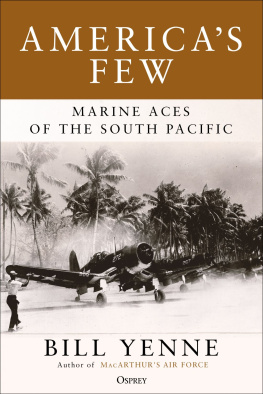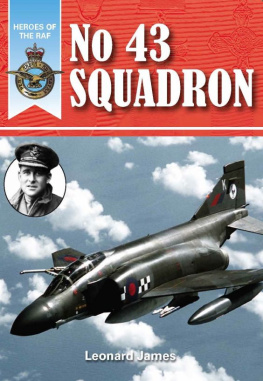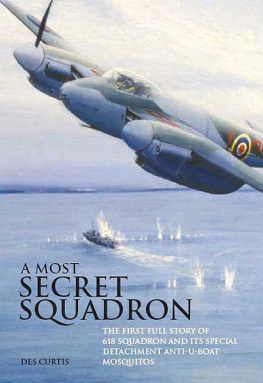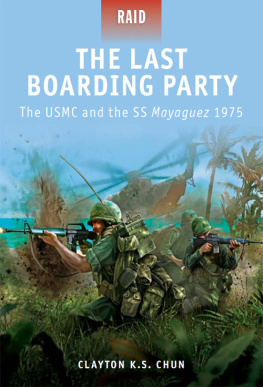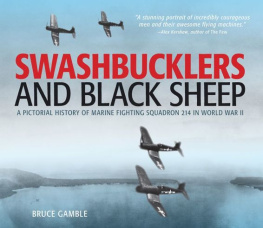
Barakaldo Books 2020, all rights reserved. No part of this publication may be reproduced, stored in a retrieval system or transmitted by any means, electrical, mechanical or otherwise without the written permission of the copyright holder.
Publishers Note
Although in most cases we have retained the Authors original spelling and grammar to authentically reproduce the work of the Author and the original intent of such material, some additional notes and clarifications have been added for the modern readers benefit.
We have also made every effort to include all maps and illustrations of the original edition the limitations of formatting do not allow of including larger maps, we will upload as many of these maps as possible.
A HISTORY OF MARINE ATTACK SQUADRON 311
BY
MAJOR WILLIAM J. SAMBITO, USMC
A flight of A-4Es in formation over San Diego, California. Clearly seen are the VMA-311 matrix letters WL on the vertical stabilizer and the squadron insignia on the fuselage. (USMC Photo A422813)
HISTORY AND MUSEUMS DIVISION HEADQUARTERS U.S. MARINE CORPS WASHINGTON, D.C. 1978
TABLE OF CONTENTS
Contents
TABLE OF CONTENTS
REQUEST FROM THE PUBLISHER
FOREWORD
In this publication the history of Marine Attack Squadron 311 is traced from its commissioning in December 1942 through three wars and several evolutions during which the unit made the transition from a fighting squadron flying propeller-driven planes to a modern attack squadron equipped with high-performance jet aircraft. The history was prepared principally from primary sources such as command diaries and chronologies, published historical works, and recollections of Marines involved.
Major William J. Sambito, a graduate of Colby College in Waterville, Maine, was commissioned in 1961 and designated a naval aviator in 1965. Between December 1966 and June 1971, he served two tours in the Western Pacific as a transport helicopter pilot. Major Sambito joined the staff of the History and Museums Division in January 1975 after attending the Armed Forces Staff College, Norfolk, Virginia.
It is hoped that the information contained herein will provide some insight into the development and employment of VMA-311 over the past three decades. The History and Museums Division welcomes any comments on the narrative and additional information or illustrations which might enhance a future edition.
E. H. SIMMONS
Brigadier General, U.S. Marine Corps (Ret.)
Director of Marine Corps History and Museums
Reviewed and approved:
15 June 1978
PREFACE
Marine Attack Squadron 311 was conceived as a Fighting Squadron during the rapid build up of forces which followed the Japanese attack on Pearl Harbor. The squadron participated in World War and was assigned occupational duty in Japan upon cessation of hostilities. During the Korean conflict, the squadron again saw combat, this time as a jet fighter squadron. When Marine air was committed in Vietnam, VMA-311 was one of the first attack squadrons to deploy to Vietnam and one of the last to leave. While this history deals with one particular squadron, it exemplifies the many Marine squadrons whose development and employment parallel that of VMA-311.
A debt of gratitude is owed to those who reviewed the manuscript and provided valuable comments. These include Lieutenant-General Thomas H. Miller, USMC; Major-General Arthur A. Adams, USMC (Ret); Major-General Paul H. Fontana, USMC (Ret); Brigadier General Henry W. Hise, USMC (Ret); Brigadier General Manning T. Jannell, USMC; Colonel James E. Johnson, USMC (Ret); Colonel Neil R. MacIntyre, USMC (Ret); Colonel John H. Miller, USMC; Colonel Michael R. Yunck, USMC (Ret); Lieutenant-Colonel Ray D. Rushlow, USMC (Ret); and Lieutenant-Colonel Samuel P. Brutcher, USMC, who not only conducted an indepth review of the history, but also provided assistance in understanding some of the technical material.
Without the assistance of the professionals in the Marine Corps Historical Division, the completion of this document would have been impossible. In this regard I extend my appreciation to Miss Gabrielle M. Neufeld and Mrs. Joyce E. Bonnett for their help in collecting source material and to the members of the Historical Branch who edited the manuscript. Thanks are also extended to the manuscript typist, Miss Catherine A. Stoll, and the publication production editor, Mr. Douglas Johnston. The pictures contained in this publication are from the Marine Corps Photo Archives and the personal collections of Brigadier General Hise, Colonel Yunck, and Lieutenant-Colonel Brutcher.
WILLIAM J. SAMBITO
Major, U.S. Marine Corps
Introduction
IntroductionFrom Birth to War: 1941-1945Post-World War II: 1946-1950The Korean Era: 1950-1955The Post-Korean Period: 1955-1965The Vietnam Years: 1965-1973Conclusion
On 6 December 1941, Marine Corps aviation consisted of two aircraft wingsthe 1 st Marine Aircraft Wing (MAW) commanded by Brigadier General Roy S. Geiger, headquartered at Marine Base, Quantico, Virginia, and Brigadier General Ross E. Rowells 2 nd Marine Aircraft Wing with its headquarters at the Naval Air Station, San Diego, California. Although the Marine Corps could boast of two aircraft wings, the total strength of the 1 st MAW consisted solely of the six squadrons of Marine Aircraft Group (MAG) 11 while the 2 nd MAW similarly included only one group, MAG-21, located on the island of Oahu in the Territory of Hawaii. Of the six MAG-21 squadrons, four were at bases on Oahu and two were on board carriers, except for a detachment on Wake Island. With the addition of Marine Scouting Squadron 3, stationed at Bourne Field, St. Thomas, Virgin Islands, the Marine Corps had a total of 13 aircraft squadrons, 204 aircraft, and 5,866 aviation personnel. {1}
On 7 December 1941, disaster struck the Territory of Hawaii when Japanese carrier aircraft attacked the U.S. fleet at Pearl Harbor. The Marine Corps Air Station at Ewa, 10 miles west of Pearl Harbor, received extensive damage and all but one of MAG-21s aircraft were either destroyed or damaged. Six hours later and 1,994 nautical miles to the west, Japanese bombers from Kwajalein struck Wake Island destroying 7 of the 12 Grumman F4F Wildcats assigned to the forward echelon of Marine Fighting Squadron 211.
After one day of war, the entire 2 nd MAW had been reduced to only 40 operational aircraft. The Marine Corps began rebuilding immediately. By September 1944, Marine Corps aviation attained its peak strength of 5 aircraft wings, which included 31 aircraft groups and 145 tactical squadrons. By 31 January 1945, Marine aviation personnel reached a peak strength of 125,162. {2}








